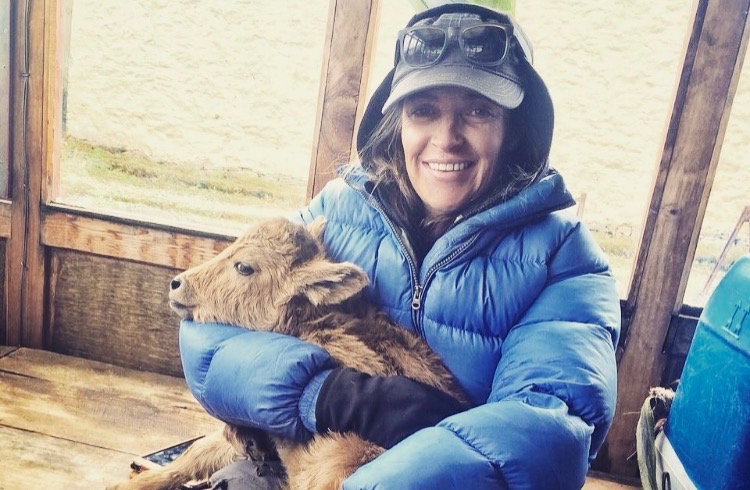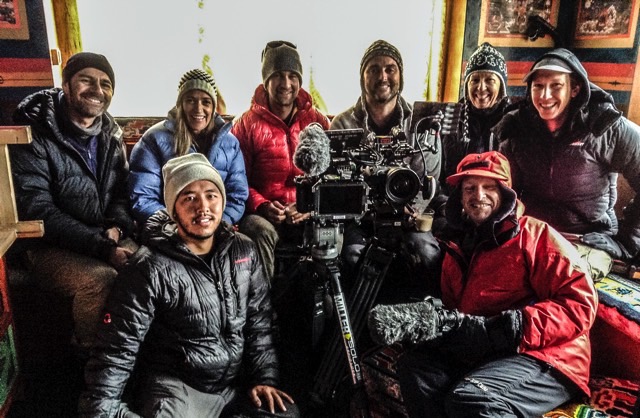Filming in harsh environments, documenting tragedy and capturing the story. We chat with this adventurous filmmaker about the challenges of documentary filmmaking.
 Photo © Jennifer Peedom
Photo © Jennifer Peedom
How did you get started in the industry?
I was a participant in the Australian Broadcasting Corporation (ABC) series Race Around Oz, the final in the Race Around the World series. Contestants were given a crash-course in documentary filmmaking and then sent out into the world to put what we’d learned into action. It was my film school.
What are the films and who are the filmmakers that inspire your work today?
I’m inspired by many filmmakers. Werner Herzog’s Grizzly Man was a real reference when I was making Solo. Kevin MacDonald’s Touching the Void was also a real inspiration. I saw it a week before I left for the Himalayas for the first time. I also draw inspiration from narrative filmmakers. Films like The Killing Fields made me want to be a filmmaker.
What do you think makes a good documentary?
Great access to amazing characters, sensitivity, and story. What makes a good film is so subjective, but here’s a list of what I try to achieve:
- Unique access to a person or place
- A compelling narrative, preferably still unfolding
- Shedding new light on a familiar subject
- Passion and/or expertise in a subject on the part of the filmmaker
- A unique approach to storytelling
- A topical hook or timeless story
- Universal themes that audiences around the world can identify with.
The majesty of mountains is beautifully captured in your films. What techniques do you use to get these shots, and what are the challenges?
Filming at high altitude is very difficult, so it’s important to have a lot of practice. I volunteered to shoot promos for guiding companies in New Zealand, in order to practice at a
Later in my career, I had the luxury of working with amazing cinematographers like Renan Ozturk, who also happens to be one of the best climbers in the world.
I use a mixture of techniques to capture the mountains. Aerial shots are always important, as well as timelapse, but to get that immediacy, sometimes you just need to go hand-held. GoPro has also opened up more possibilities, as well as drones, although they still don’t work at super-high altitudes.
In the end, you have to be careful to capture the story, no matter what the format. There were moments in the aftermath of the avalanche on Everest in

Your films Solo and Sherpa deal with tragic events. What is your approach to interviewing people who have been affected by trauma?
I’ve experienced moments of death and tragedy on three films now, and these moments will never leave me. It can be difficult to know whether to continue the film, let alone conduct an interview. Each situation needs careful consideration, and my advice is to be a human first, then a filmmaker.
When I was filming Solo, (about Andrew McAuley's solo attempt to kayak between Australia and New Zealand), I was sharing a room with Andrew’s wife Vicky and their son, when the police arrived to deliver the tragic news. In that case, I stopped filming and didn’t continue again until many months later, at Vicky McAuley’s request.
On Sherpa, following the avalanche on Mount Everest, as our team of Sherpa arrived safely back down to Base Camp, their faces showed a mixture of exhaustion, relief, grief, but mostly fear. It didn’t feel right to film them. It was only days later, after they returned from visiting their families, that they were ready to talk.
After the expedition was over, we returned to their village. I had to choose whether to film an interview with one of the widows of a Sherpa who had passed away during the avalanche. It was the most difficult decision I’ve ever had to make. Her baby had been born the night her husband left for the mountain. I decided to go ahead with the interview when the father of the Sherpa who had died asked that we continue filming to “show the cost” of Everest expeditions to the Sherpa community. We were all in tears.
When we conducted an interview with our main character’s wife, the years of fear and anguish came spilling out. It was the most powerful interview of the film.
I think the most important thing is to trust your instinct. First, on whether it is ethical to continue, and second, when is the right moment. On Sherpa, I was very lucky to be surrounded by a Sherpa team of cameramen and a translator, who I involved in all those discussions.
Mountain uses music to build much of the tension and ambiance in the film. What tips do you have for using music in film?
I was lucky enough to work with one of the best orchestras in the world on that project, so I won’t take credit for their work! My advice is to listen to lots of music while you’re looking at your footage. Try and find the music that best captures the essence of what you are trying to say.
What is your approach to editing and the relationship with the editor?
For me, the editor is one of the most important collaborators in the entire process. In a documentary, you often spend many months in the edit. I try to nut out the structure and come into the edit with an edit script, then once that is assembled, you can move things around and figure out what is missing.
I think it is important to try things, make mistakes, restructure. This takes time, but the difference between a good film and a great film, can be a few more weeks in the edit.
How do you think the under-representation of women in the film industry can be addressed?
It has been great to see some real attention being brought to this issue in the last couple of years. But there is still so much more to be done. There are better representation rates in
I think women are particularly vulnerable when they have children. More support around these years could make all the difference. I’m lucky to have lots of support, so have managed to have kids and continue working, but I won’t pretend it has always been easy. It’s sometimes a very stressful juggle, particularly when away on long shoots, or traveling to promote a film.
What advice do you have for aspiring filmmakers to get started?
First: Have something to say! In the end, that’s what filmmaking is all about.
Second: Practice! Get a camera, shoot something, edit it together.
When I was starting out, I’d shoot anything, a friend's wedding, a climbing expedition, then edit it all together. The best way to learn all the aspects, like sound and camera operating, is to edit your own material. You quickly learn to hold your shots and get
Want to be mentored by a professional filmmaker? Keep an eye out for our Travel Film Scholarship!
Or watch the Travel Documentary Masterclass for more exclusive advice.
Related articles
Simple and flexible travel insurance
You can buy at home or while traveling, and claim online from anywhere in the world. With 150+ adventure activities covered and 24/7 emergency assistance.
Get a quote
No Comments